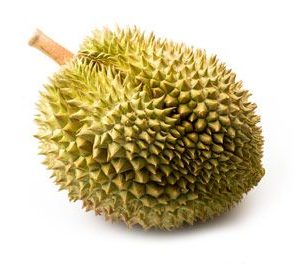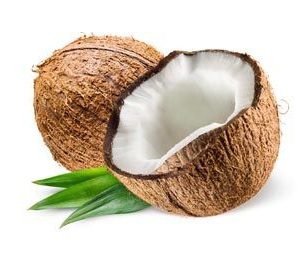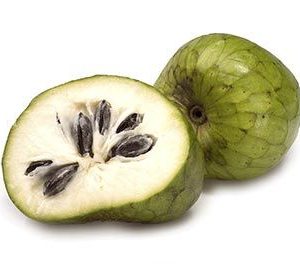When we think of citrus fruits, many examples come to mind, such as lemons, limes, or grapefruit. But when it comes to popularity, these fruits are often overtaken by one type — oranges. In fact, the orange is so popular that it represents the largest citrus cultivar groups around the world, with about 70% of citrus cultivation belonging to oranges.
Oranges are believed to have originated from Asia and were subsequently brought to the Mediterranean by Italian traders. By the mid-1500s, they reached South America and Mexico. Today, oranges are widely cultivated in South Africa, Australia, the Mediterranean and the Caribbean. However, the largest producer of oranges is none other than the U.S., with Florida producing over 200 million boxes per year.
Oranges grow on 25-foot trees in subtropical climates, with young trees not surviving even just a brief frost. When it comes to precipitation, it’s noted that orange trees cultivated in dry climates have the best and juiciest fruits, while orange trees planted in damp climates are sour and dry. The two states famous for their oranges are California and Florida, with California producing the cultivars Washington Navel and Valencia, and Florida producing Hamlin and Pineapple.
Health Benefits of Oranges
The greatest nutritional appeal of orange is its vitamin C content, comprising 97.5 milligrams in a one-cup serving. This is important for building up defenses and strengthening the immune system. With the “C” comes powerful antioxidants that scavenge free radicals in the blood.
Oranges have surplus minerals, such as potassium, calcium, magnesium and phosphorus. Potassium is an important component of cell and body fluids that helps control heart rate and blood pressure; calcium, besides aiding in the development of strong bones and teeth, also helps in muscle contraction, the activation of protein kinases and mediating cellular response to epinephrine, vasopressin and other hormones.
B vitamins are plentiful in oranges, helping the body convert food into fuel for energy. Folate (vitamin B9) helps the body develop healthy red blood cells, divides them correctly and may help lower the risk of neural tube defects in fetuses. Pyridoxine (vitamin B6) helps the body make the neurotransmitters needed to send nerve cell signals, vital for normal brain function and development. B6 also makes the mood hormones serotonin and dopamine and noradrenaline.
Phytochemicals — naturally occurring, health-beneficial compounds in foods — are prominent in oranges. Flavonoids are a good example, namely hesperidin, eriocitrin, naringin, narirutin and apigenin. Naringin, narirutin and hesperidin are well-known for their strong antioxidant and anti-inflammatory properties.
Oranges contain high amounts of dietary fiber, with about 3.3 grams per cup. This component is responsible for bulking up the stool and promoting satiety, lowering LDL (bad) cholesterol and regulating blood pressure. Because of its role in balancing the pH and stimulating regular bowel movements, it’s been linked to a reduced risk of colorectal cancer.
While they may be delicious and nutritious, remember to consume oranges in moderation as they contain fructose, which may be harmful to your health in excessive amounts. You may refer to the table below for more information.
Orange Nutrition FactsServing Size: 1 cup, sections (180 grams), raw |
||
| Amt. Per Serving |
% Daily Value* |
|
| Calories | 84.6 kcal | |
| Total Fat | 0.216 g | |
| Saturated Fat | 0.027 g | |
| Sodium | 0 mg | |
| Total Carbohydrates | 21.2 g | |
| Dietary Fiber | 4.32 g | |
| Sugar | 16.8 g | |
| Protein | 1.69 g | |
| Potassium326 mg | Vitamin C95.8 mg | |
| Calcium72 mg | Magnesium18 mg | |
Studies on Oranges
The effects of the flavonoid hesperidin in oranges were investigated in a 2011 randomized, controlled and crossover study and was reported to significantly lower diastolic blood pressure (DBP) after a four-week test period of orange juice consumption. Another study published in 2011 from the American Journal of Clinical Nutrition showed that orange juice may decrease DBP in healthy, middle-aged, moderately overweight men, when regularly consumed and postprandially (after-meal consumption) to increase microvascular (small heart vessel) reactivity.
A 2012 study from the International Journal of Cancer Research and Treatment isolated 15 polymethoxyflavones (PMFs) — a unique class of flavonoids existing almost exclusively in citrus fruits (particularly the peels of sweet oranges) — from sweet orange peel extract and synthesized to investigate their biological activity. They presented cytotoxic properties against the promyelocytic leukemia HL60 cell line. This cytotoxicity is further elaborated in a 2007 study from the Bioorganic & Medicinal Chemistry, where some PMFs were shown to have moderate anti-carcinogenic activities, but a few showed strong inhibitory activities against the proliferation and induced apoptosis (programmed cell death) of breast cancer cell lines.
Oranges Fun Facts
While we usually peel oranges before eating them, in the mid-1950s it was publicized that eating peeled whole oranges may offer significant health benefits. This was mainly marketed due to the protopectin and bioflavonoids found in the peel.
Summary
It’s a foregone conclusion that oranges are good for you, and the vitamin C they provide may help ward off colds and flu. But many other health benefits are packed into this tender, delicious fruit.
The amazing antioxidant power in oranges is important for killing off harmful free radicals. Besides vitamin A and B6 vitamins like folates, thiamin, pyridoxine, potassium, and flavonoids like beta-carotenes, zeaxanthin, lutein, anthocyanins, and hydroxycinnamic acid make oranges are more than just a juicy snack.







Reviews
There are no reviews yet.